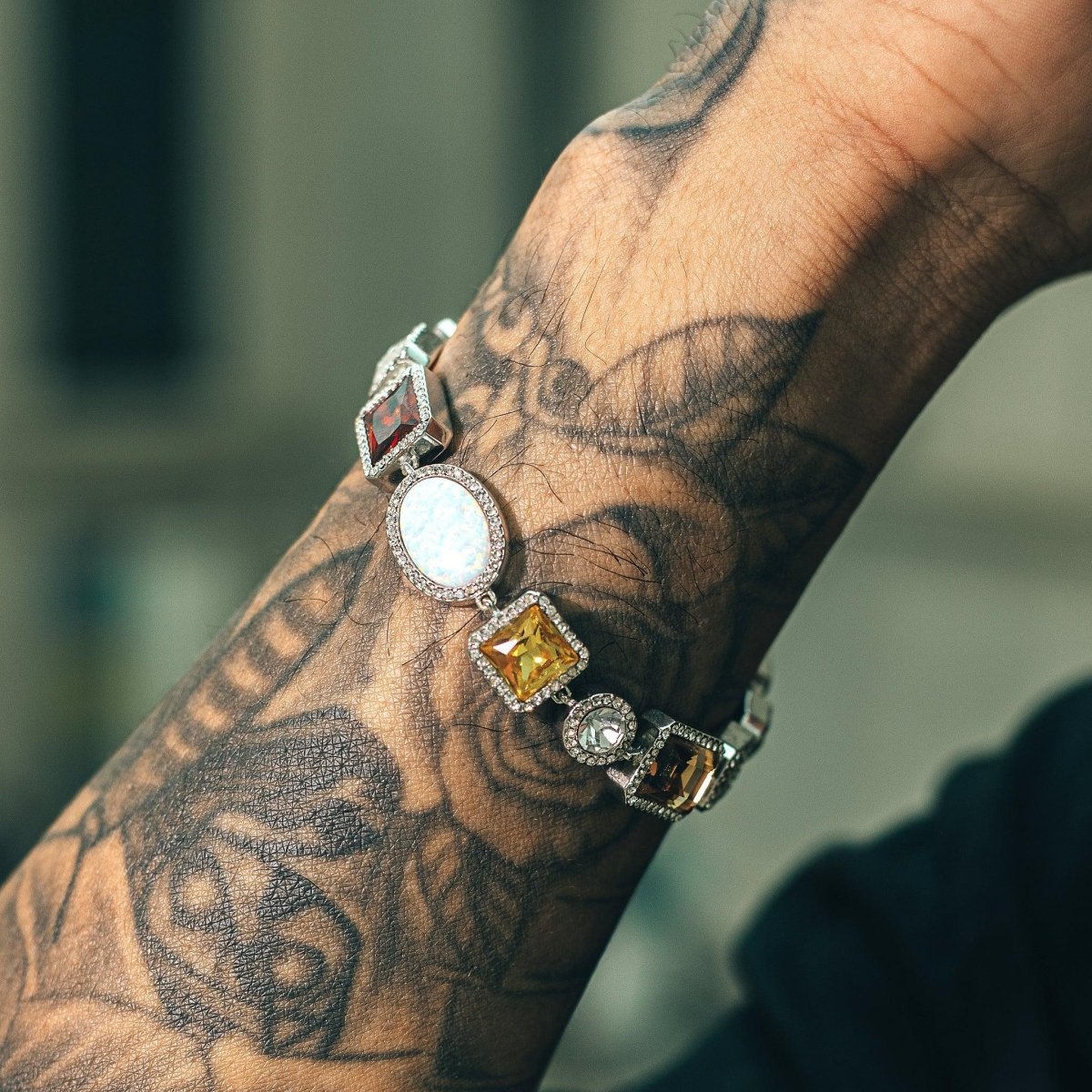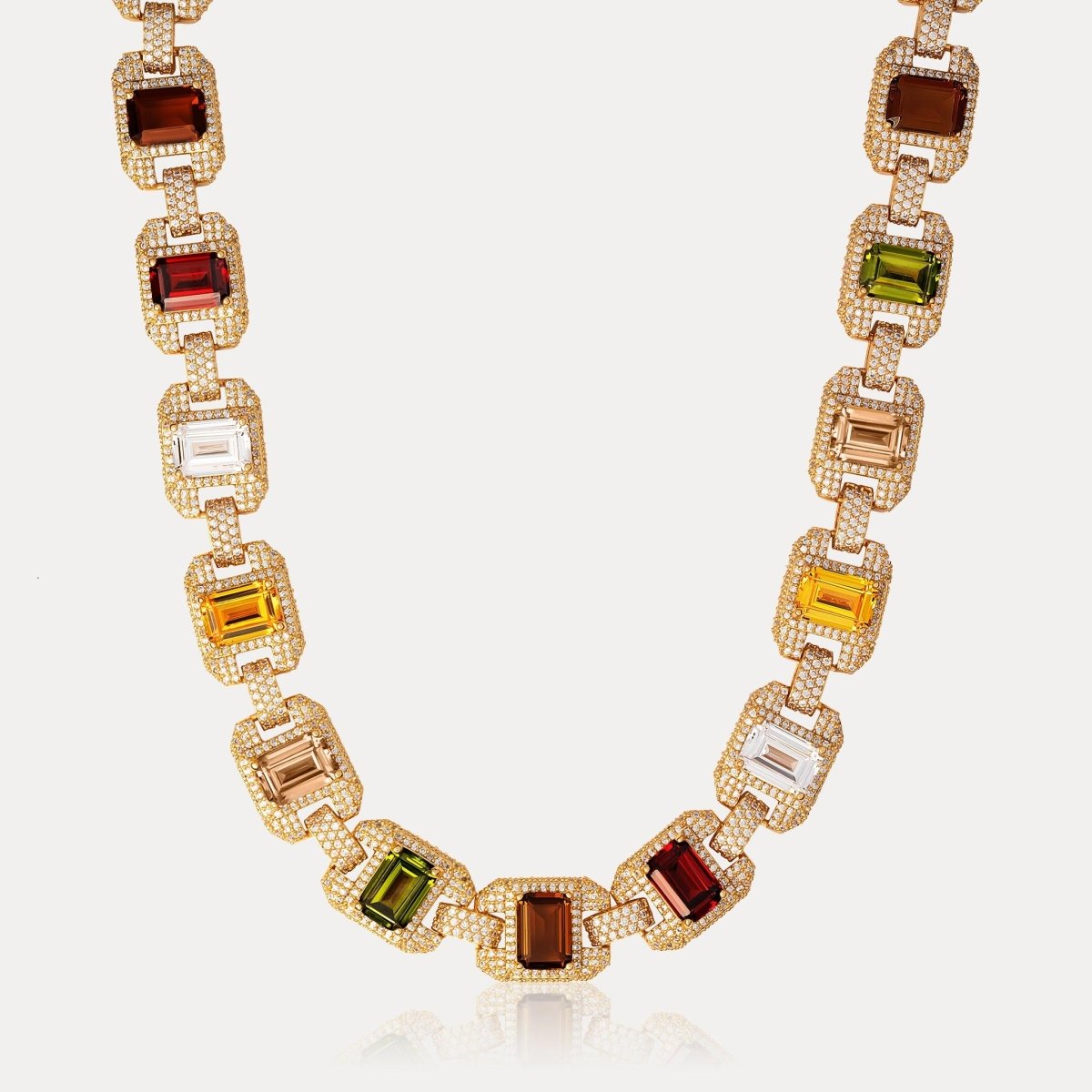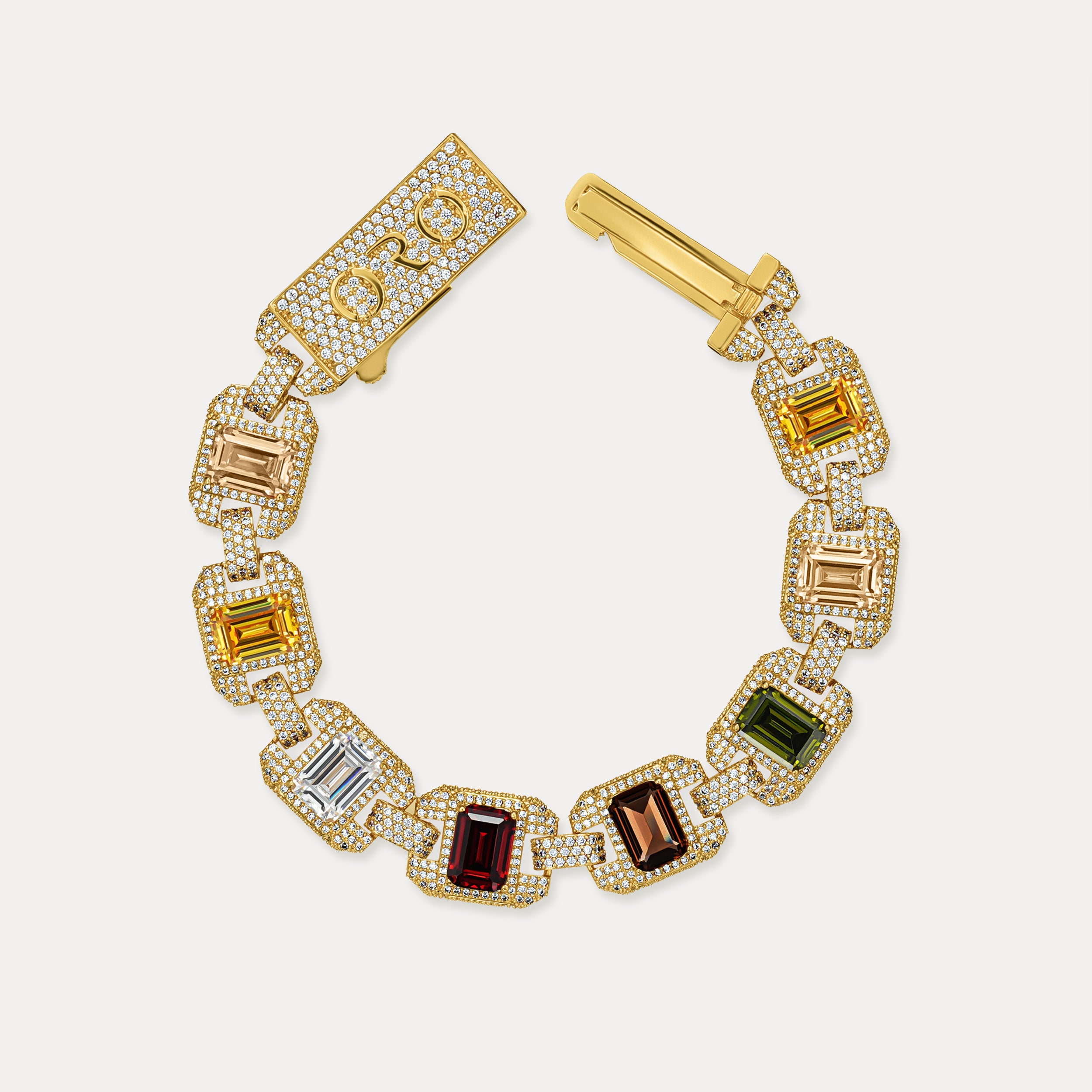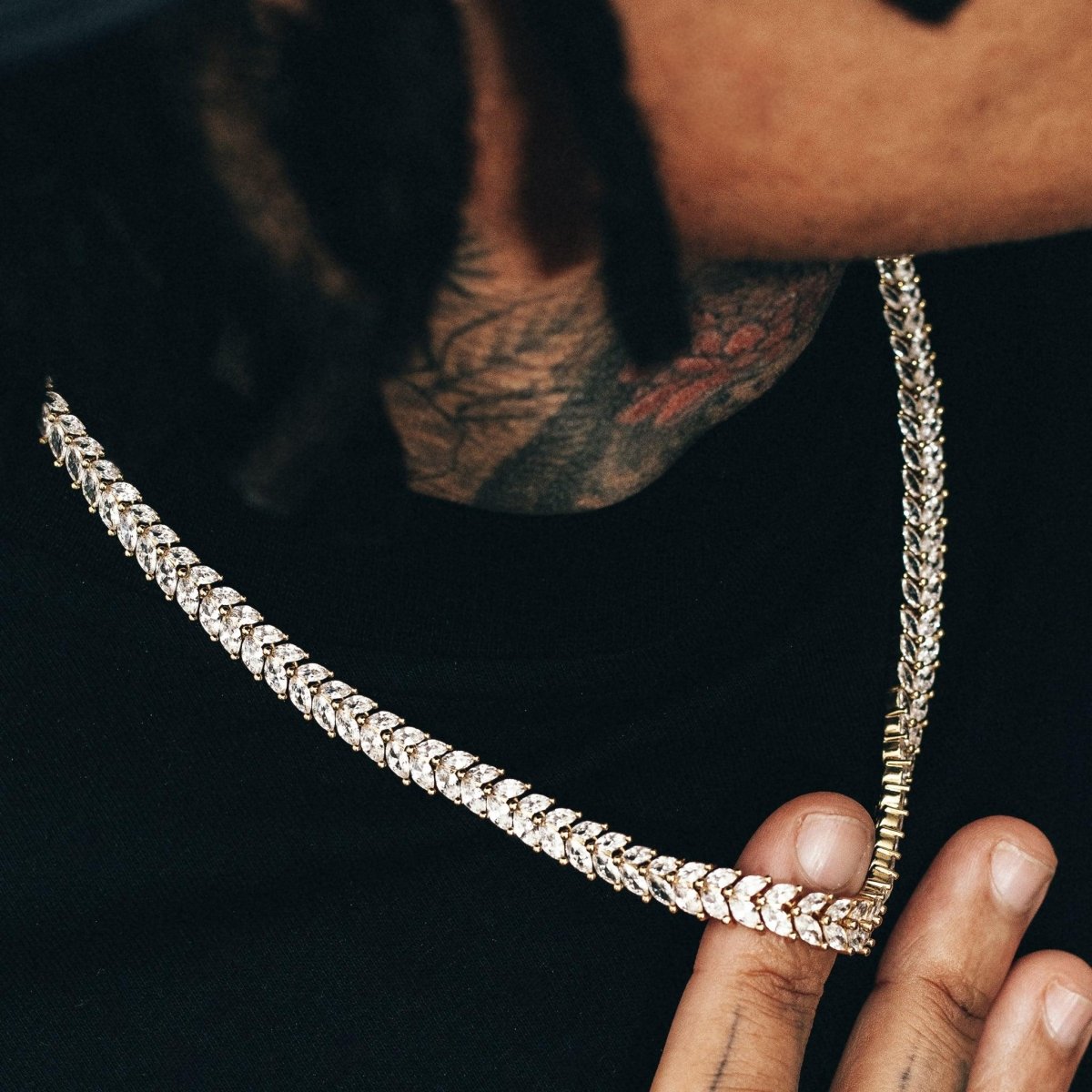Gemstones in Jewelry
Gemstones have been used in jewelry for centuries, adding beauty and value to various pieces. From ancient times to the present day, gemstone jewelry has played a significant role in different cultures and societies. This article explores the history of gemstones in jewelry, the types of gemstones used, popular gemstone cuts and shapes, the symbolism of gemstone colors, and showcases some famous gemstone jewelry pieces.
Key Takeaways
- Gemstones have been used in jewelry for centuries, adding beauty and value to various pieces.
- There are different types of gemstones used in jewelry, including precious, semi-precious, organic, and synthetic gemstones.
- Gemstones can be cut and shaped into various forms, such as round, princess, emerald, and oval cuts.
- Gemstone colors hold symbolic meanings, with red symbolizing passion, blue symbolizing calmness, green symbolizing nature, and yellow symbolizing happiness.
- Famous gemstone jewelry pieces, such as the Hope Diamond and the Cullinan Diamond, have become iconic and highly valued.
The History of Gemstones in Jewelry
Ancient Origins of Gemstone Jewelry
Gemstone jewelry has a rich history that dates back thousands of years. Ancient civilizations such as the Egyptians, Greeks, and Romans were known to adorn themselves with gemstones for both decorative and symbolic purposes. These early civilizations believed that gemstones possessed mystical powers and could bring good fortune, protect against evil, and even heal ailments.
Gemstone jewelry was often crafted using techniques such as bezel setting and wire wrapping. These methods allowed the gemstones to be securely held in place while still allowing their natural beauty to shine through.
In addition to their symbolic significance, gemstones were also valued for their rarity and beauty. Precious gemstones such as diamonds, rubies, and emeralds were especially prized and reserved for royalty and the wealthy elite.
Overall, the ancient origins of gemstone jewelry demonstrate the enduring appeal and significance of these beautiful stones.
Gemstone Jewelry in Medieval Times
During the medieval times, gemstone jewelry held significant cultural and symbolic value. Nobility and royalty adorned themselves with gemstone jewelry as a display of wealth and power. Gemstones such as diamonds, rubies, and sapphires were highly sought after and were often used to create intricate and elaborate jewelry pieces.
Gemstone jewelry during this period was also believed to possess protective and healing properties. It was believed that wearing certain gemstones could ward off evil spirits and bring good fortune. For example, amethyst was believed to protect against drunkenness and promote sobriety.
In addition to their symbolic and protective qualities, gemstone jewelry was also used as a form of currency. Gemstones were highly valuable and could be easily transported and traded. They were often used as a means of exchange for goods and services.
Overall, gemstone jewelry in medieval times played a significant role in society, representing wealth, power, protection, and even currency.
Gemstone Jewelry in the Renaissance
During the Renaissance period, gemstone jewelry became increasingly popular among the wealthy and noble classes. Jewelers during this time focused on creating intricate and elaborate designs that showcased the beauty of gemstones. Diamonds, emeralds, and sapphires were particularly favored during this era.
Gemstone jewelry in the Renaissance was often used as a symbol of wealth and status. Nobles would adorn themselves with extravagant pieces that featured large gemstones set in gold or silver. These pieces were often passed down through generations as family heirlooms.
In addition to their aesthetic appeal, gemstones were also believed to possess symbolic meanings during the Renaissance. For example, diamonds were associated with strength and invincibility, while emeralds were believed to bring good fortune and enhance fertility.
Overall, gemstone jewelry in the Renaissance was a reflection of the opulence and artistic creativity of the time.
Gemstone Jewelry in the Victorian Era
During the Victorian Era, gemstone jewelry became increasingly popular. Diamonds were the most coveted gemstones during this time, symbolizing wealth and status. Other popular gemstones included sapphires, rubies, and emeralds. These gemstones were often set in intricate designs, such as filigree and scrollwork, which were characteristic of Victorian jewelry.
One notable trend in Victorian gemstone jewelry was the use of lockets. Lockets were often adorned with gemstones and were used to hold keepsakes or photographs of loved ones. They were considered sentimental and romantic pieces of jewelry.
In addition to lockets, cameos were also popular during the Victorian Era. Cameos were carved gemstones, typically made from materials like shell or coral, and were often used as brooches or pendants.
Overall, gemstone jewelry in the Victorian Era was characterized by its intricate designs, sentimental symbolism, and the use of a variety of gemstones.
Types of Gemstones Used in Jewelry
Precious Gemstones
Precious gemstones are highly valued for their rarity, beauty, and durability. These gemstones are typically more expensive and sought after than semi-precious gemstones. Some of the most well-known precious gemstones include diamonds, rubies, sapphires, and emeralds.
- Diamonds are known for their brilliance and are often used as the centerpiece in engagement rings.
- Rubies are prized for their vibrant red color and are associated with passion and love.
- Sapphires come in various colors, with blue being the most popular. They symbolize wisdom and loyalty.
- Emeralds are known for their rich green color and are associated with rebirth and fertility.
When purchasing precious gemstone jewelry, it's important to consider the 4Cs: color, clarity, cut, and carat weight. These factors determine the value and quality of the gemstone. Additionally, it's advisable to buy from reputable jewelers to ensure authenticity and ethical sourcing.
Tip: To maintain the beauty of precious gemstone jewelry, avoid exposing them to harsh chemicals and store them separately to prevent scratching.
Semi-Precious Gemstones
Semi-precious gemstones are a popular choice in jewelry due to their affordability and wide range of colors. These gemstones are not as rare or valuable as precious gemstones, but they still possess their own unique beauty and charm.
One of the most well-known semi-precious gemstones is amethyst, which is prized for its deep purple color. Amethyst is often used as a centerpiece in rings, necklaces, and bracelets, and its vibrant hue adds a touch of elegance to any piece of jewelry.
Another popular semi-precious gemstone is citrine, which is known for its warm yellow color. Citrine is often used as a substitute for yellow diamonds and is believed to bring joy and abundance to the wearer.
Other common semi-precious gemstones include aquamarine, peridot, and topaz. Each of these gemstones has its own unique color and meaning, making them a versatile choice for jewelry designers.
When choosing semi-precious gemstone jewelry, it's important to consider the quality of the gemstone and the craftsmanship of the piece. Look for gemstones that are well-cut and have good clarity, and choose jewelry that is made with attention to detail and precision.
In summary, semi-precious gemstones offer an affordable and beautiful option for jewelry lovers. With their wide range of colors and meanings, they can add a pop of color and personality to any outfit.
Organic Gemstones
Organic gemstones are formed from living organisms or natural materials. These gemstones have unique characteristics and are highly valued in the jewelry industry. One example of an organic gemstone is amber, which is fossilized tree resin. Amber is known for its warm, golden color and is often used in jewelry pieces such as necklaces and earrings.
Another organic gemstone is pearl, which is formed inside the shells of certain mollusks. Pearls come in various colors, including white, black, and pink, and are prized for their lustrous appearance. They are commonly used in necklaces, bracelets, and earrings.
Organic gemstones require special care to maintain their beauty and durability. It is important to avoid exposing them to harsh chemicals or extreme temperatures, as this can damage their delicate structure. Regular cleaning and proper storage are essential to preserve the natural beauty of organic gemstone jewelry.
In summary, organic gemstones offer a unique and natural beauty to jewelry pieces. Their formation process and characteristics make them highly sought after by jewelry enthusiasts.
Synthetic Gemstones
Synthetic gemstones, also known as lab-created or man-made gemstones, are created in a laboratory using various techniques. These gemstones have the same chemical composition and physical properties as natural gemstones, but they are made in a controlled environment.
One advantage of synthetic gemstones is that they are more affordable compared to their natural counterparts. They can be produced in large quantities, making them readily available in the market.
However, it is important to note that synthetic gemstones may not hold the same value as natural gemstones in terms of rarity and exclusivity. Collectors and enthusiasts often prefer natural gemstones for their unique characteristics and historical significance.
In summary, synthetic gemstones offer an accessible and budget-friendly option for those who want to enjoy the beauty of gemstone jewelry without breaking the bank. They provide a wide range of colors and cuts, allowing individuals to find the perfect piece that suits their style and preferences.
Gemstone Cuts and Shapes
Round Cut
The round cut is one of the most popular and classic gemstone cuts used in jewelry. It is known for its brilliant and sparkling appearance, as well as its ability to maximize the stone's fire and brilliance. The round cut is characterized by its circular shape and 58 facets, which are carefully cut to reflect and refract light. This cut is often used for diamonds, as it enhances their natural beauty and allows for maximum light performance.
- The round cut is versatile and can be used in various types of jewelry, including engagement rings, earrings, and pendants.
- It is a timeless choice that never goes out of style and is often considered a symbol of elegance and sophistication.
- When selecting a round cut gemstone, it is important to consider the 4Cs: carat weight, color, clarity, and cut. These factors determine the overall quality and value of the stone.
Tip: The round cut is a great option for those who want a classic and timeless look. Its symmetrical shape and brilliant sparkle make it a popular choice for engagement rings.
Princess Cut
The Princess Cut is one of the most popular gemstone cuts used in jewelry. It is a square or rectangular shape with pointed corners, and it is known for its brilliant sparkle. The Princess Cut is often used for engagement rings and other fine jewelry pieces.
When choosing a Princess Cut gemstone, it is important to consider the quality of the cut. A well-cut Princess Cut will have precise angles and facets that maximize the stone's brilliance and fire. It is also important to choose a high-quality gemstone with good color and clarity for the best overall appearance.
In terms of popularity, the Princess Cut is second only to the Round Cut. Its clean lines and modern shape make it a versatile choice for both traditional and contemporary jewelry designs.
If you're looking for a timeless and elegant gemstone cut, the Princess Cut is definitely worth considering.
Emerald Cut
The emerald cut is a popular choice for gemstone jewelry. It is characterized by its rectangular shape with cut corners, which creates a step-like appearance. The emerald cut is known for its elegance and sophistication, making it a favorite among those who appreciate classic and timeless designs.
One important aspect to consider when choosing an emerald cut gemstone is its clarity. Due to the large, open facets of the cut, any inclusions or imperfections in the stone may be more visible. Therefore, it is recommended to select a gemstone with a higher clarity grade to ensure a stunning and eye-catching piece of jewelry.
In terms of color, the emerald cut can showcase the beauty of various gemstones. From vibrant emeralds to sparkling diamonds, the emerald cut enhances the color and brilliance of the stone. It is a versatile cut that can be used with a wide range of gemstones, making it a popular choice for engagement rings, earrings, and pendants.
When wearing an emerald cut gemstone, it is important to consider the setting. The emerald cut looks stunning in a solitaire setting, allowing the stone to take center stage. Alternatively, it can also be complemented with side stones or a halo setting for added sparkle and glamour.
In conclusion, the emerald cut is a timeless and elegant choice for gemstone jewelry. Its rectangular shape and step-like facets create a sophisticated look that enhances the beauty of various gemstones. Whether it's an emerald, diamond, or any other gemstone, the emerald cut is sure to make a statement.
Oval Cut
The oval cut is a popular choice for gemstones in jewelry. It is characterized by its elongated shape, similar to an oval or an egg. This cut is known for its brilliance and fire, as it maximizes the stone's ability to reflect light. The oval cut is versatile and can be used for various gemstones, including diamonds, sapphires, and emeralds.
- The oval cut is often used for engagement rings, as it creates the illusion of longer and slimmer fingers.
- This cut is also a great choice for earrings and pendants, as it adds elegance and sophistication to the jewelry piece.
Overall, the oval cut is a timeless and classic choice for gemstone jewelry, offering a unique and beautiful shape that enhances the stone's natural beauty.
Gemstone Colors and Meanings
Red Gemstones and Their Symbolism
Red gemstones are known for their vibrant color and rich symbolism. They are often associated with passion, love, and energy. One of the most famous red gemstones is the ruby, which is considered the king of gemstones. Rubies are believed to bring good fortune and protect against evil. Another red gemstone is the garnet, which symbolizes strength, courage, and vitality. The garnet is also known for its healing properties, helping to balance energy and promote good health.
In addition to rubies and garnets, there are other red gemstones that hold significance. The red coral is believed to bring luck and protect against negative energies. It is often used in jewelry to promote harmony and positivity. The red spinel is another red gemstone that is highly valued for its beauty and rarity. It is associated with passion and vitality, and is said to inspire creativity and motivation.
When choosing red gemstone jewelry, it is important to consider the symbolism and meaning behind the gemstone. Whether you are looking for a symbol of love, strength, or luck, red gemstones offer a variety of options to express your personal style and beliefs.
- Ruby: Symbolizes passion and good fortune
- Garnet: Represents strength and vitality
- Red Coral: Brings luck and promotes harmony
- Red Spinel: Inspires creativity and motivation
Blue Gemstones and Their Symbolism
Blue gemstones are highly sought after for their stunning beauty and rich symbolism. These gemstones are often associated with qualities such as tranquility, wisdom, and loyalty. Sapphire is one of the most popular blue gemstones, known for its deep blue color and durability. It is often used as the birthstone for the month of September.
In addition to sapphire, there are several other blue gemstones that are prized for their unique characteristics. Aquamarine is a pale blue gemstone that is often associated with the ocean and is believed to bring calmness and clarity. Blue topaz is another popular blue gemstone that is known for its vibrant blue color and affordability.
Blue gemstones can be incorporated into various types of jewelry, including rings, necklaces, and earrings. They add a touch of elegance and sophistication to any outfit. Whether you choose a sapphire, aquamarine, or blue topaz, wearing a blue gemstone jewelry piece is sure to make a statement.
Green Gemstones and Their Symbolism
Green gemstones are often associated with nature, growth, and renewal. They are believed to bring balance and harmony to the wearer. One of the most well-known green gemstones is the emerald, which is often associated with love and fertility. Peridot is another popular green gemstone that is believed to have healing properties and promote positive energy.
In addition to their symbolic meanings, green gemstones also come in a variety of shades. Some common shades of green gemstones include:
- Emerald green: This deep, rich green color is often associated with luxury and elegance.
- Jade green: Jade is a popular gemstone in many cultures and is often associated with good luck and protection.
- Peridot green: Peridot is known for its vibrant, lime green color and is often associated with growth and prosperity.
If you're looking to add a touch of nature and symbolism to your jewelry collection, consider incorporating green gemstones into your pieces.
Yellow Gemstones and Their Symbolism
Yellow gemstones are associated with warmth, happiness, and positivity. They are believed to bring joy and optimism to the wearer. Citrine is one of the most popular yellow gemstones and is often used to attract wealth and abundance. It is also known for its ability to enhance creativity and self-confidence.
In addition to citrine, other yellow gemstones include yellow sapphire, yellow topaz, and yellow diamond. Each of these gemstones has its own unique properties and meanings.
Here is a table comparing the properties of these yellow gemstones:
| Gemstone | Properties |
|---|---|
| Citrine | Attracts wealth and abundance |
| Yellow Sapphire | Enhances intuition and wisdom |
| Yellow Topaz | Promotes self-confidence |
| Yellow Diamond | Symbolizes clarity and purity |
Yellow gemstones are a beautiful choice for jewelry, whether it's a necklace, ring, or bracelet. They add a touch of sunshine and radiance to any outfit.
Please note that the meanings and properties mentioned are based on folklore and belief, and individual experiences may vary.
Famous Gemstone Jewelry Pieces
The Hope Diamond
The Hope Diamond is one of the most famous gemstones in the world. It is a blue diamond weighing approximately 45.52 carats. The diamond is known for its rich history and captivating beauty.
- The Hope Diamond was originally mined in India and was believed to have been part of the eye of a Hindu idol.
- It was later acquired by French gem merchant Jean-Baptiste Tavernier and sold to King Louis XIV of France.
- The diamond has passed through numerous owners over the years, including King Louis XVI and Marie Antoinette.
Tip: The Hope Diamond is said to be cursed, bringing misfortune to its owners. It is currently on display at the Smithsonian National Museum of Natural History in Washington, D.C.
The Star of India
The Star of India is one of the most famous gemstone jewelry pieces in the world. It is a star sapphire that weighs a staggering 563.35 carats. The gemstone is known for its unique asterism, which creates a star-like effect when light is reflected on its surface. The Star of India was discovered in Sri Lanka and is believed to be over 2 billion years old.
- The Star of India is currently housed in the American Museum of Natural History in New York City.
- It was donated to the museum by financier J.P. Morgan in 1900.
Tip: When purchasing a star sapphire, make sure to examine the asterism closely to ensure its quality and authenticity.
The Cullinan Diamond
The Cullinan Diamond is the largest gem-quality diamond ever found, weighing an astounding 3,106 carats. It was discovered in South Africa in 1905 and was named after Sir Thomas Cullinan, the owner of the mine where it was found. The diamond was eventually cut into several smaller diamonds, with the largest piece known as the Cullinan I or the Great Star of Africa. This magnificent diamond is now part of the British Crown Jewels and is displayed in the Tower of London.
The Cullinan Diamond has a remarkable history and has captured the imagination of people around the world. Its sheer size and brilliance make it a truly iconic gemstone. It serves as a testament to the incredible beauty and value that gemstones can possess. The Cullinan Diamond continues to be a symbol of luxury and prestige, representing the pinnacle of gemstone craftsmanship and the enduring allure of fine jewelry.
The Blue Moon Diamond
The Blue Moon Diamond is one of the most famous gemstone jewelry pieces in the world. This rare and exquisite diamond is known for its mesmerizing blue color, which is a result of trace amounts of boron in its crystal structure. The Blue Moon Diamond weighs an impressive 12.03 carats and is classified as a Type IIb diamond, which means it is almost or entirely devoid of nitrogen impurities. This diamond was discovered in South Africa in 2014 and was sold at an auction for a record-breaking price of $48.4 million. It is now part of a private collection and is considered a true marvel of nature.
Conclusion
In conclusion, gemstones play a vital role in the world of jewelry. They add beauty, value, and significance to various pieces. Whether it's a sparkling diamond, a vibrant ruby, or a mesmerizing sapphire, gemstones have the power to captivate and enchant. From ancient civilizations to modern-day fashion, gemstones have been cherished and sought after. Their unique colors, properties, and symbolism make them a timeless choice for adornment. So, the next time you admire a piece of jewelry, remember the remarkable journey of the gemstone that makes it truly special.
Frequently Asked Questions
What are the most popular gemstones used in jewelry?
Some of the most popular gemstones used in jewelry include diamonds, emeralds, rubies, sapphires, and amethysts.
Are all gemstones natural?
No, not all gemstones are natural. Some gemstones are synthetic, meaning they are created in a laboratory.
What is the difference between precious and semi-precious gemstones?
The terms precious and semi-precious are used to categorize gemstones based on their rarity and value. Precious gemstones include diamonds, rubies, emeralds, and sapphires, while semi-precious gemstones include amethysts, topaz, garnets, and opals.
Can gemstones be damaged or scratched?
Yes, gemstones can be damaged or scratched if not handled with care. Some gemstones are more durable than others, so it's important to know the hardness and care instructions for each gemstone.
How should I clean my gemstone jewelry?
The best way to clean gemstone jewelry is to use a mild soap and warm water. Gently scrub the jewelry with a soft brush, rinse it thoroughly, and pat it dry with a clean cloth.
Can I wear gemstone jewelry every day?
It depends on the type of gemstone and the setting of the jewelry. Some gemstones are more suitable for everyday wear, while others may be more delicate and require special care.
Best Sellers



















































Leave a comment
This site is protected by hCaptcha and the hCaptcha Privacy Policy and Terms of Service apply.